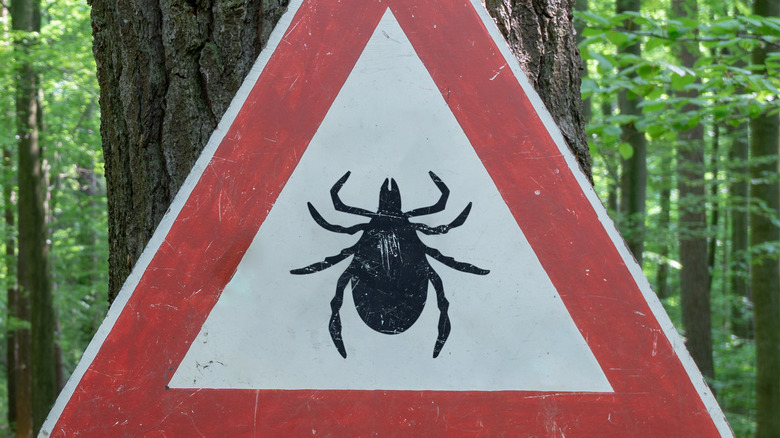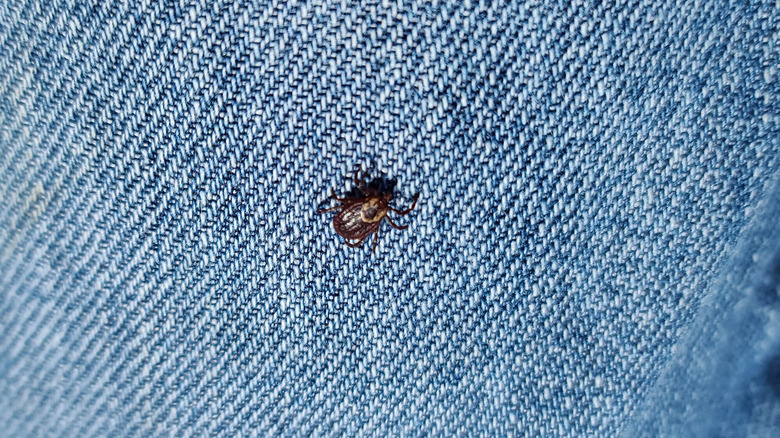Is There A Cure For Lyme Disease?
Lyme disease is one of those common conditions that people have heard of but don't fully understand. Some people fear that a single tick bite will lead to an infection — and in some cases, it can happen. But as the CDC points out, only blacklegged ticks carry the bacterium that causes Lyme disease. The ticks also have to latch on to the victim for at least 24 hours. Moreover, they must come from the northeast and north central United States, which are considered highly endemic areas for the disease. Statistically speaking, the average person's risk of contracting Lyme disease is fairly low. But statistics are cold comfort if symptoms begin to develop.
Most tick bites, even those where the tick was removed quickly, can develop a wide, round, red mark. The mark itself is no reason to worry, according to the Mayo Clinic. But if the mark comes along with a fever or chills, fatigue, neck stiffness, a rash, swollen lymph nodes, or a headache, it may be time to see a doctor.
Doctors diagnose Lyme disease using an ELISA (enzyme-linked immunosorbent assay) test to look for Lyme disease antibodies. If that test comes back positive, doctors will then perform a Western blot test, which further confirms the presence of antibodies. After the tests are complete, the doctor will start the patient on a round of antibiotics to combat the disease. But does the treatment lead to a cure?
There is a cure
Lyme disease treatment generally takes one of two forms, as laid out by the Mayo Clinic. Patients early on in the progression of the disease typically receive a two- to three-week course of antibiotics. The specific antibiotic depends on the patient's age and if they are pregnant or breastfeeding.
Patients with a more advanced form of Lyme disease may be put on an intravenous antibiotic drip for two to four weeks. Doctors are more likely to suggest this course of treatment for patients whose central nervous systems have been affected by Lyme disease. However, while this treatment is very effective in destroying the infection, it may cause lingering side effects that take longer to clear up.
Most patients can be cured, usually during the time they are on antibiotics. But as the CDC says, there is no test to prove a patient is cured. This is because Lyme disease tests look for antibodies which can remain in a person's system well after the infecting bacteria is gone. Thus, a patient may carry the antibodies for months or even years after successful treatment, despite being cured of the infection.


